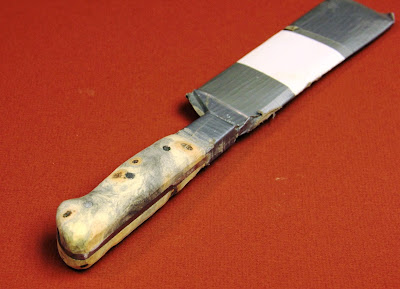About two
years ago I started selling some of my creations on Etsy.com. If you are not familiar with Etsy, it is a
website that offers crafters and artisans a virtual shop of your own to sell your
items. Actually, I have two shops on
Etsy. The first is called the Firebird Cigar Box Transformation Studio, or
Firebird Box Studio for short. In this
shop I sell repurposed wooden cigar boxes. I use the empty cigar boxes as a
medium for my creativity by carving or pyrography or collage. I have been making these boxes for many years
now and they were accumulating in my basement.
My shop on Etsy gives me the opportunity to sell some of my accumulation
without the hassle of setting up a booth and selling them at a craft fair.
I stared
the second Etsy shop last month. It is
called “Cast with Wood”. In it I sell
all my other crafted wooden items that are not repurposed cigar boxes. Most of what I sell in this shop are hand
crafted wooden boxes. I’m not trying to
earn a living from these shops, just a little spending money. (Actually, most of the proceeds go back into
tools and supplies.)
If your
wooden craft creations are starting to take up too much space in your house,
even after you’ve given gifts to all your family and friends, maybe you should
consider Etsy. It really works. But
before you jump in, here are a few tips based on my personal experience.
Tip #1 –
Browse around Etsy first
Before you
set up your shop on Etsy, take some time to browse around. Search for items similar to the ones you will
be selling. Notice how the seller
describe the items and present them. See
what they are charging and what they add for shipping. Notice the quality of the photographs they
use. Think of a possible name for your
shop and see if it has already been used or if there are similar shop names
that might get confused with your shop.
Figure out ways to distinguish your shop from the competition, to make
it stand out.
Tip #2 –
Begin with the end in mind
This tip
is straight out of Stephen R. Covey’s famous book: “The Seven Habits of HighlyEffective People”. Before you start
writing a description of any item you plan to put into your shop, look at the
item and figure out how you are going to ship it. Actually, your very first step would be to
purchase a postage scale if you don’t already have one. Once you know the weight and the size you can
investigate shipping options. Will you
use the United Stated Postal Service, or UPS, or FedEx? If USPS, will you ship Priority Mail or
regular mail? Do you have a box to fit
the item, or will you use a standard USPS box?
Do you have packing material?
Will you charge the purchaser the exact shipping cost, or will you add
an amount for handling? You get the
picture.
Tip #3 –
Take good quality photos
If you are
not good at taking good quality photos, get the help of a friend. I think it is extremely important to present
you items as professionally as possible.
In browsing through Etsy, you will quickly notice the shops that use
good photography verses the ones that take a quick iPhone shot on the dining
room table. Use a background cloth. (Felt or fleece fabric works fine.) Show
you items in natural light. Show
close-up details. Etsy allows you 5 photos
per item. Use all five.
 |
| A carved wooden cigar box I sold on Etsy |
Tip #4 –
Get organized
Use an
excel spreadsheet to keep track of every item listed and every purchase. Set up your own system. Number each item. If you are not comfortable
with Excel, do it by hand on a ledger sheet.
Etsy is good at keeping track of your sales, but it is a good idea to
keep your own records so you can personalize them. If you think that you will only be selling a
few items so you don’t need organization and records, you will have a rude
awakening. Things get confused rather
quickly. If you are not organized your
efforts will result in problems, not enjoyment.
Tip #5 –
Don’t price too lowThis is a common mistake for crafters. Don’t price your turned wooden bowl to compete with the mass-produced turned wooden salad bowl from some sweat shop in Asia, on sale at Wal-Mart. The things you make with your own hands are valuable, one-of-a-kind works of art and should be priced as such. People scan Etsy looking for unique crafted item for that special gift. They are seldom looking for the cheapest item, but rather the best item for their needs. They appreciate your work and craftsmanship and are willing to pay for it.
Tip #6 –
Treat the buyer like they are royalty
I’m
suggesting you go beyond merely thinking “the customer is always right”. I believe you must treat them with extra
special attention. Your goal should be
to make them happy with their purchase.
Thank them often. Include a
personalized form letter or note with the shipment, and maybe add a short
handwritten line. The making of some of
the items I have sold were actually described on this bog. I pointed that out to the buyer. It's all part of the personal connection. There is a practical motive for this customer rapport:
positive feedback comments on you Etsy site.
When a buyer takes the time to write a nice comment, it is certainly
very valuable for influencing potential future buyers.
Give Etsy
a try. It is a rewarding feeling when
someone sees the value in your work and is willing to pay you money to posess
the item you created.





































